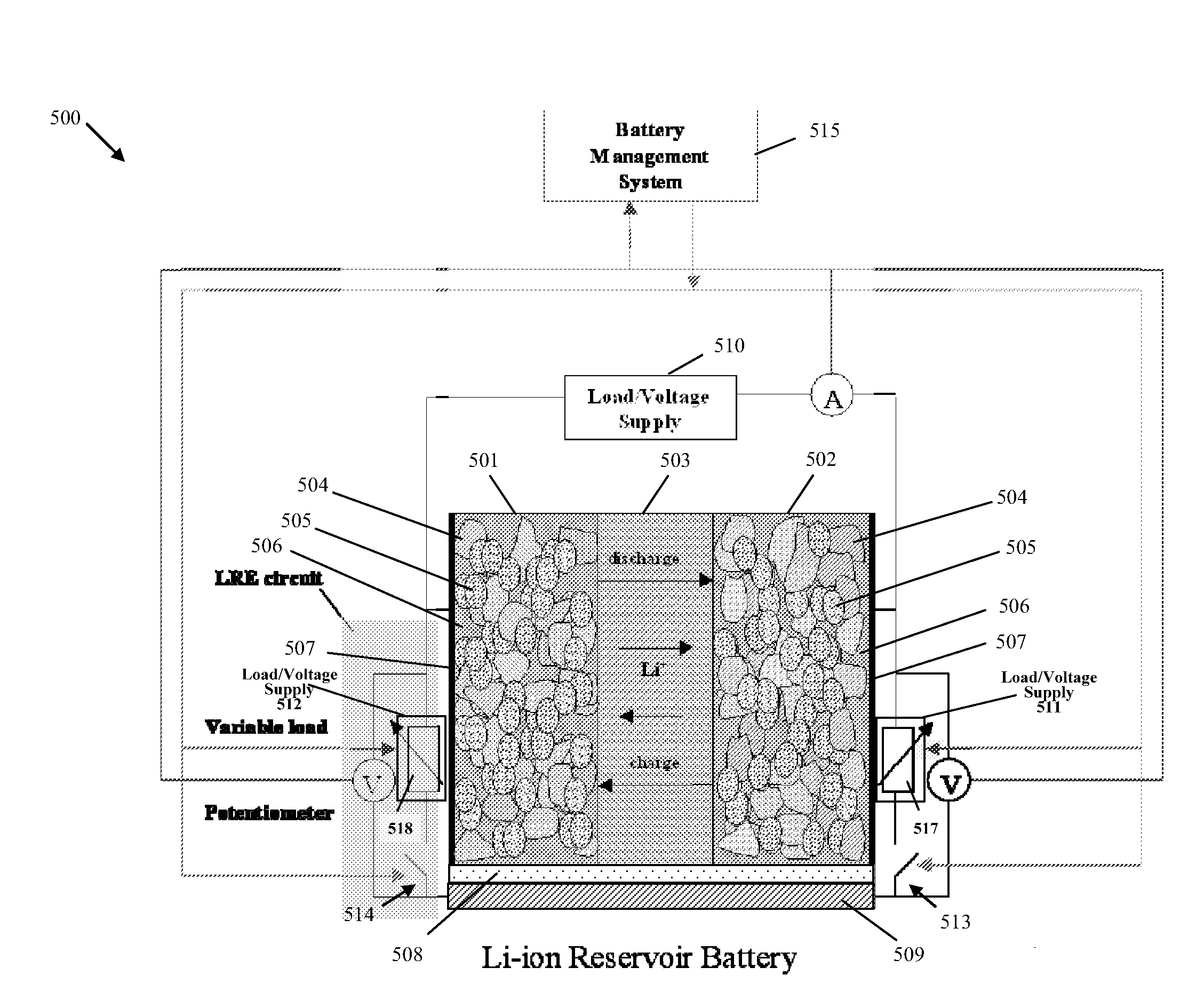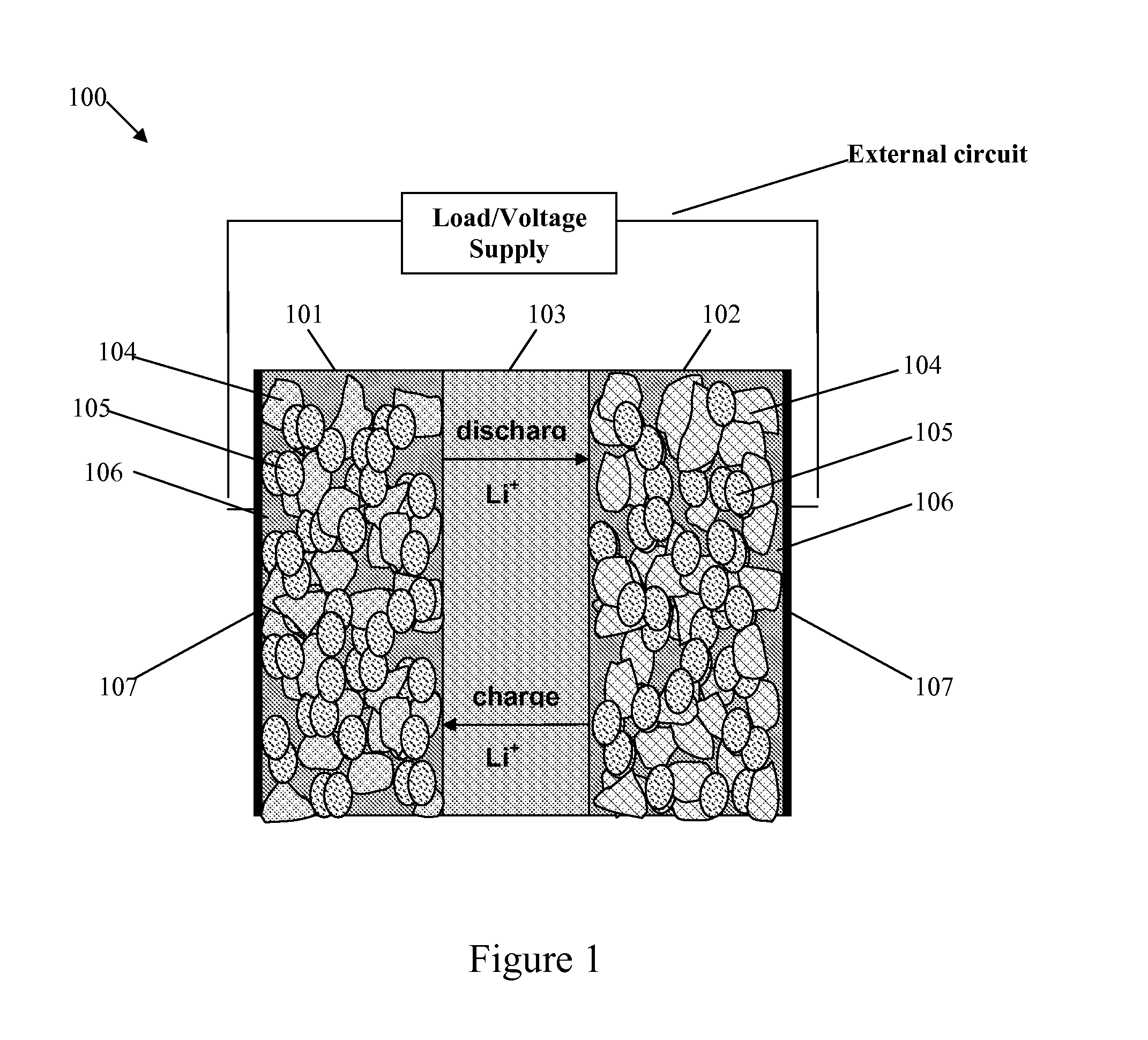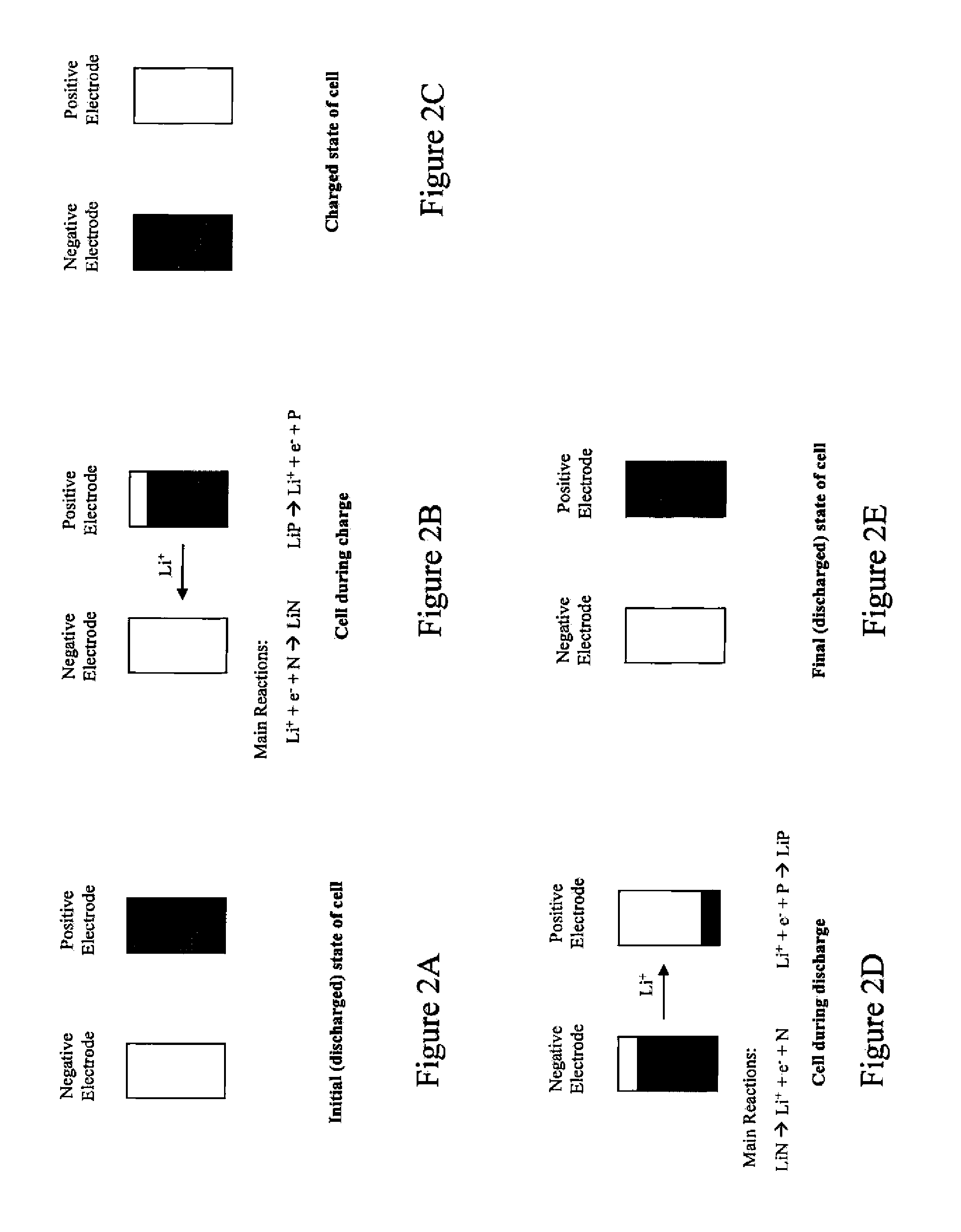Lithium reservoir system and method for rechargeable lithium ion batteries
a lithium ion battery and lithium reservoir technology, applied in the direction of secondary cell details, primary cell maintenance/service, sustainable manufacturing/processing, etc., can solve problems such as safety risks or battery degradation, and achieve the effects of reducing the risk of lithium ion battery damage, and reducing the risk of lithium ion damag
- Summary
- Abstract
- Description
- Claims
- Application Information
AI Technical Summary
Benefits of technology
Problems solved by technology
Method used
Image
Examples
Embodiment Construction
[0041]FIG. 1 shows a “conventional” lithium-ion cell 100, which includes a negative electrode 101, a positive electrode 102 and a separator region 103 between the negative electrode 101 and the positive electrode 102. The negative electrode 101 and the positive electrode 102 each includes active materials 104 into which lithium can be inserted, inert materials 105, electrolyte 106 and a current collector 107. The separator region 103 includes an electrolyte with a lithium cation, and serves as a physical barrier between the negative electrode 101 and the positive electrode 102 so that the electrodes are not electronically connected within the cell 100.
[0042] During charging, there is a generation of electrons at the positive electrode 102 and consumption of an equal amount of electrons at the negative electrode 101. The electrons are transferred via an external circuit. In an ideal operation of the cell 100, the electrons are generated at the positive electrode 102 because there is...
PUM
 Login to View More
Login to View More Abstract
Description
Claims
Application Information
 Login to View More
Login to View More - R&D
- Intellectual Property
- Life Sciences
- Materials
- Tech Scout
- Unparalleled Data Quality
- Higher Quality Content
- 60% Fewer Hallucinations
Browse by: Latest US Patents, China's latest patents, Technical Efficacy Thesaurus, Application Domain, Technology Topic, Popular Technical Reports.
© 2025 PatSnap. All rights reserved.Legal|Privacy policy|Modern Slavery Act Transparency Statement|Sitemap|About US| Contact US: help@patsnap.com



